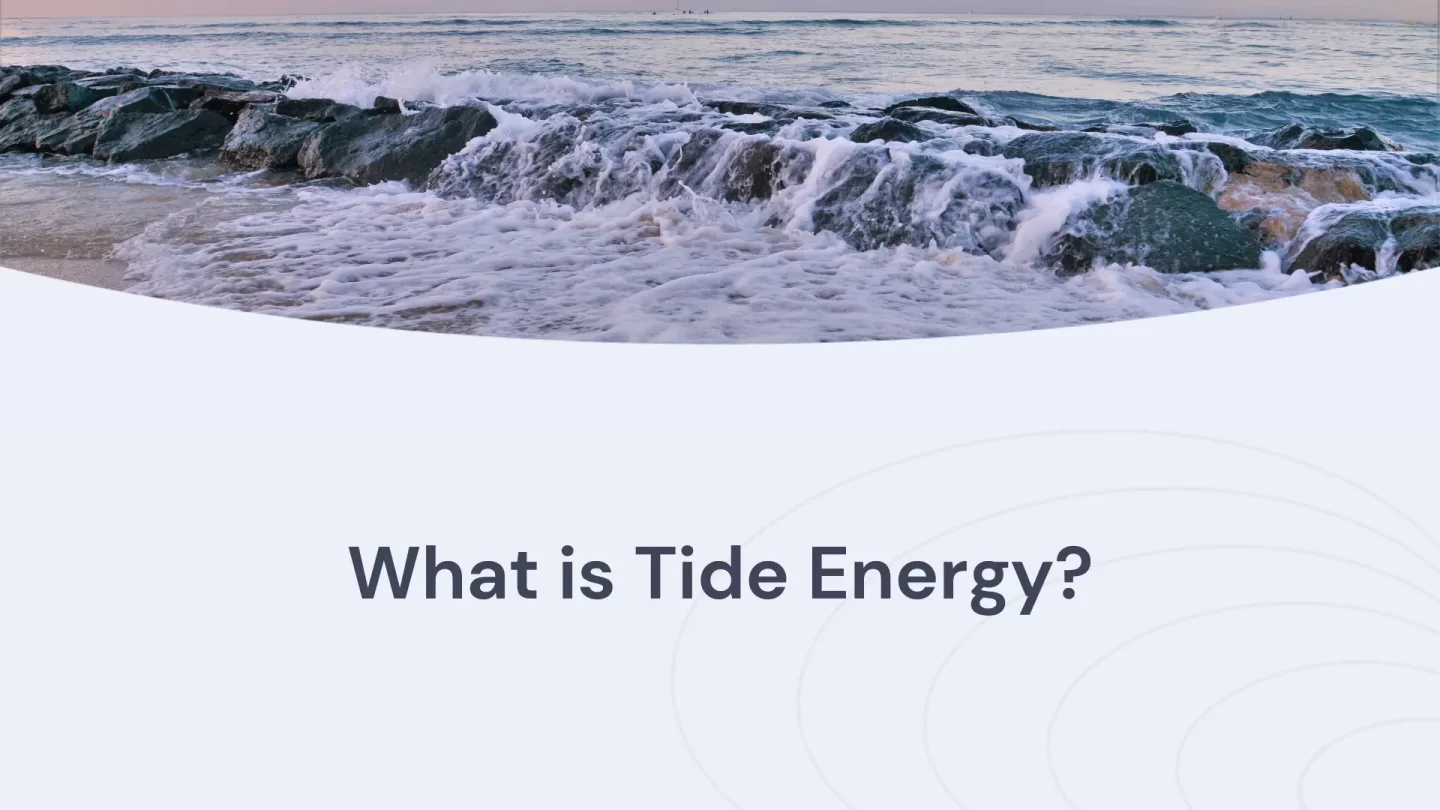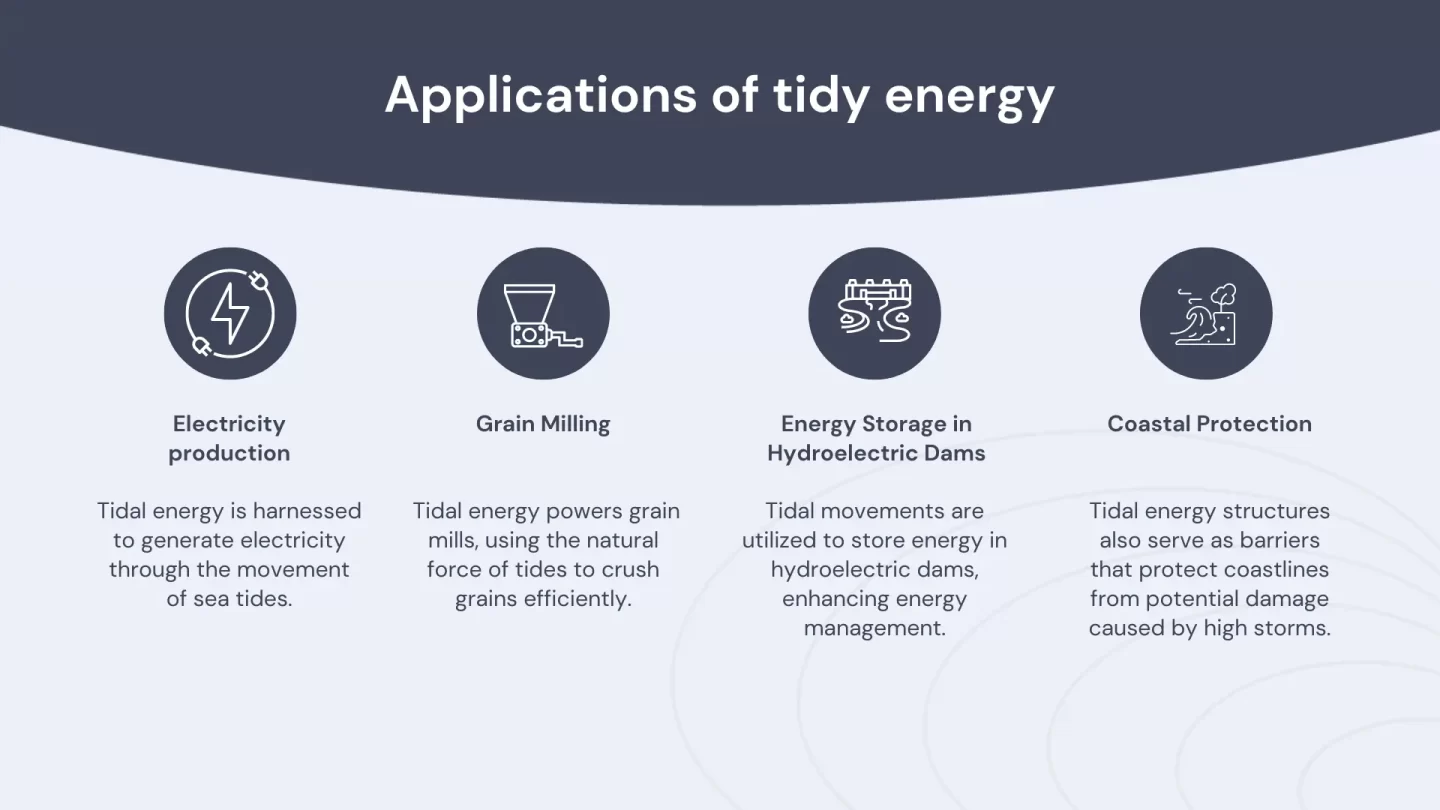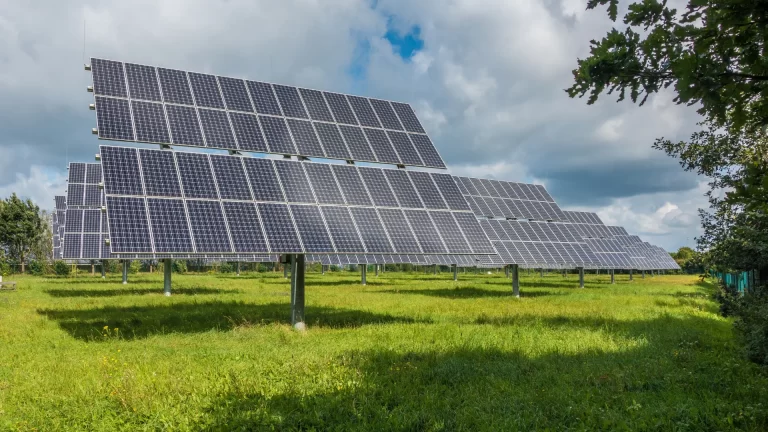Tidal power, a type of renewable energy, harnesses the movement of ocean tides. Engineers use tidal turbines or barrages to capture the kinetic energy of the tides and convert it into electricity.

How do tidal turbines work?
Tidal turbines, similar in design to wind turbines, operate underwater and tidal currents drive them. As the tide flows in and out, the turbine blades spin and generate electricity, which then transmits to the grid.
Tidal barrages, on the other hand, work by using the power of the tide to move water through a series of turbines. As the tide flows in and out, a barrage traps water, creating a difference in water levels. When the tide goes out, releasing the water behind the barrage causes it to flow through the turbines, generating electricity.

Advantages and disadvantages
Tidal power, driven by the constant and predictable gravitational pull of the moon and sun, is a reliable and predictable renewable energy source. Unlike the intermittent nature of solar or wind power, you can predict tidal power with high accuracy. This predictability makes it a valuable source of baseload power.
One of the main advantages of tidal power is that it is a clean and sustainable source of energy. Unlike fossil fuels, which release greenhouse gases and contribute to climate change, tidal power does not produce any harmful emissions or pollutants.
However, tidal energy also has some disadvantages. Firstly, installing and maintaining tidal turbines and barrages can be expensive and might impact the environment. Additionally, only coastal areas with strong tidal currents can use tidal power, limiting its widespread adoption.
Despite these challenges, tidal power has the potential to play an important role in meeting the world’s energy needs in a sustainable way. Governments and businesses around the world are investing in tidal power projects, and researchers are working to improve the efficiency and cost-effectiveness of tidal energy technology.
Conclusion
In conclusion, tidal energy is a type of renewable energy that is generated by the movement of ocean tides. It is a clean and sustainable source of energy that has the potential to play an important role in meeting the world’s energy needs in a sustainable way. While there are some challenges associated with the installation and maintenance of tidal power technology, advances in technology and continued investment in this field hold promise for the future of renewable energy.
Frequently asked questions
While tidal power is generally considered a clean and sustainable source of energy, there may be some environmental impacts associated with its construction and operation. These impacts can include changes to water circulation patterns, sediment movement, and the behavior of marine life in the area. However, researchers are working to mitigate these impacts through careful site selection and the use of environmentally friendly technology.
The movement of ocean tides generates tidal power, and the movement of ocean surface waves generates wave power. Although both forms of renewable energy, tidal power tends to be more predictable and reliable than wave power. This predictability stems from tides being driven by the constant and predictable gravitational pull of the moon and the sun.
The electricity generated by tidal power varies with several factors. These include the strength of tidal currents and the size and efficiency of turbines or barrages. Transmission infrastructure availability also plays a role.. However, tidal power has the potential to generate significant amounts of electricity, with some estimates suggesting that it could meet up to 20% of the UK’s electricity needs.






